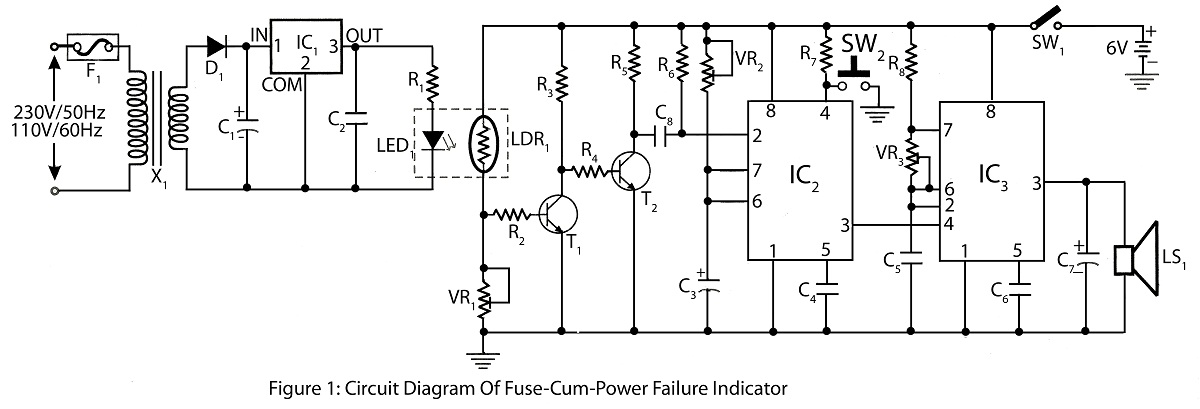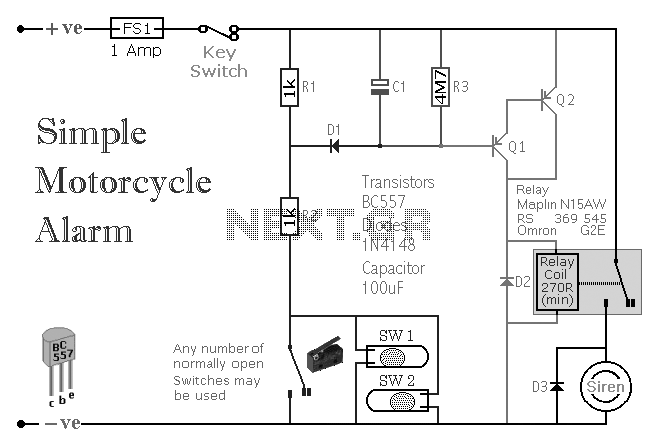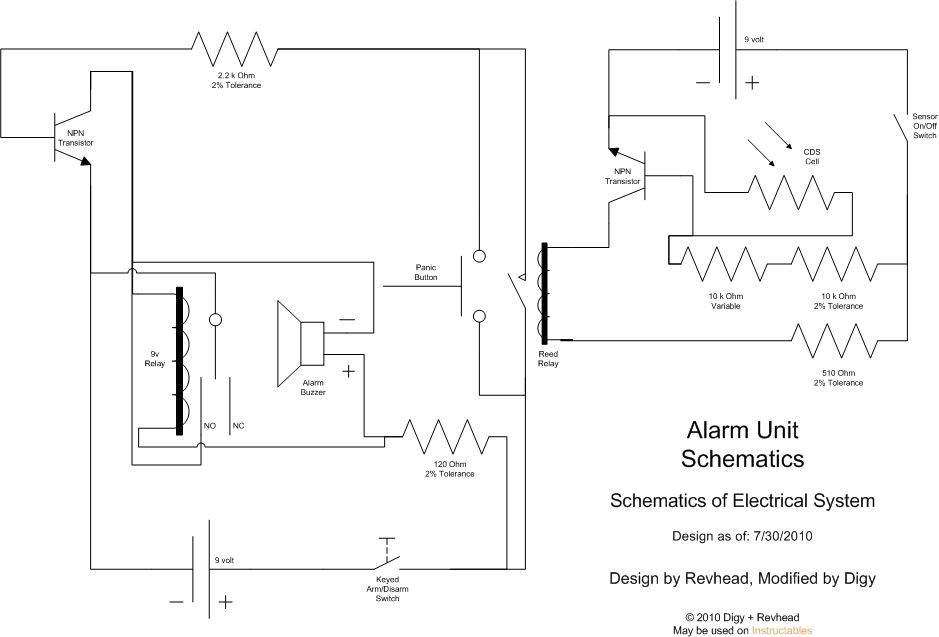
Fuse-Cum-Power Failure Indicator with alarm

The Fuse Cum Power Failure Indicator utilizes a thermistor and a timer IC (NE555) in its circuit design. The circuit diagram includes a parts list for the fuse cum power failure indicator, which signals instances of power failure.
The Fuse Cum Power Failure Indicator is an essential device designed to alert users of power interruptions, thereby preventing potential damage to connected electronic equipment. The core of this circuit is the NE555 timer IC, which operates in a monostable mode to provide a time delay for the indication signal.
The circuit begins with a thermistor, a temperature-sensitive resistor that changes its resistance based on ambient temperature. In this application, it is used to detect the absence of power. When the power supply is interrupted, the thermistor's resistance changes, triggering the NE555 timer.
The NE555 timer is configured with a resistor-capacitor (RC) time constant that determines the duration of the output signal. When the power failure is detected, the timer activates, generating a high output signal for a predetermined period. This output can be used to drive an LED indicator, providing a visual alert to users.
The complete circuit includes additional components such as resistors, capacitors, and possibly a relay, depending on the load requirements. The parts list should detail each component's specifications, including resistance values, capacitance, and power ratings, ensuring that the circuit operates reliably under various conditions.
Overall, the Fuse Cum Power Failure Indicator is a practical solution for monitoring power supply status, safeguarding electronic devices from unexpected outages.Fuse Cum Power Failure Indicator employs thermister and timer IC NE555 circuit diagram with parts list of fuse cum power failure indicator indicate power failure. 🔗 External reference
The Fuse Cum Power Failure Indicator is an essential device designed to alert users of power interruptions, thereby preventing potential damage to connected electronic equipment. The core of this circuit is the NE555 timer IC, which operates in a monostable mode to provide a time delay for the indication signal.
The circuit begins with a thermistor, a temperature-sensitive resistor that changes its resistance based on ambient temperature. In this application, it is used to detect the absence of power. When the power supply is interrupted, the thermistor's resistance changes, triggering the NE555 timer.
The NE555 timer is configured with a resistor-capacitor (RC) time constant that determines the duration of the output signal. When the power failure is detected, the timer activates, generating a high output signal for a predetermined period. This output can be used to drive an LED indicator, providing a visual alert to users.
The complete circuit includes additional components such as resistors, capacitors, and possibly a relay, depending on the load requirements. The parts list should detail each component's specifications, including resistance values, capacitance, and power ratings, ensuring that the circuit operates reliably under various conditions.
Overall, the Fuse Cum Power Failure Indicator is a practical solution for monitoring power supply status, safeguarding electronic devices from unexpected outages.Fuse Cum Power Failure Indicator employs thermister and timer IC NE555 circuit diagram with parts list of fuse cum power failure indicator indicate power failure. 🔗 External reference





